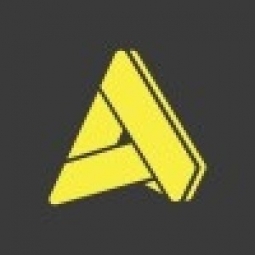公司规模
Large Corporate
地区
- America
国家
- United States
产品
- Factory MES
技术栈
- Manufacturing operations management system
实施规模
- Enterprise-wide Deployment
影响指标
- Productivity Improvements
- Cost Savings
- Revenue Growth
技术
- 功能应用 - 制造执行系统 (MES)
适用行业
- 食品与饮料
适用功能
- 离散制造
- 质量保证
用例
- 自动化制造系统
- 预测性维护
服务
- 系统集成
关于客户
Berner Foods 是市场领先的优质食品供应商,产品包括天然奶酪、特种奶酪、加工奶酪和大豆饮料。该公司为超市、药店、大型超市、俱乐部、一元店、特种食品经销商、餐饮服务和合同制造渠道提供尖端产品。其设施经美国农业部和美国食品局批准,并通过了 ISO 9001 认证,符合北美几乎所有大型零售商的严格标准。
挑战
Berner Foods 是一家领先的优质食品供应商,它面临着多项挑战。该公司缺乏来自车间的完整信息,这阻碍了他们识别和解决效率低下的根本原因。他们还面临着产能限制问题,因为他们无法确定生产效率低下和产能限制的根本原因。这种缺乏可视性限制了他们的产能和业务增长。此外,生产人员每周要花费数百小时填写数十份表格。仅主管每天就要花费两到四个小时处理文书工作。
解决方案
Berner Foods 实施了工厂 MES,这是 Aptean 的制造运营管理 (MES) 系统。与竞争产品相比,该系统实施时间短、学习曲线短得多、价值实现时间快得多。工厂 MES 使 Berner 能够采用精益和六西格玛原则来减少浪费和释放产能。该系统提供实时数据,使公司能够做出更好、更及时的决策。工厂 MES 还将工厂车间文书工作减少了 40%,从而立即节省了每年 30,000 美元的劳动力成本。该系统已成为 Berner 的战略管理工具,为财务、营销和销售部门提供了更好的数据访问方式。
运营影响
数量效益

Case Study missing?
Start adding your own!
Register with your work email and create a new case study profile for your business.
相关案例.

Case Study
The Kellogg Company
Kellogg keeps a close eye on its trade spend, analyzing large volumes of data and running complex simulations to predict which promotional activities will be the most effective. Kellogg needed to decrease the trade spend but its traditional relational database on premises could not keep up with the pace of demand.

Case Study
HEINEKEN Uses the Cloud to Reach 10.5 Million Consumers
For 2012 campaign, the Bond promotion, it planned to launch the campaign at the same time everywhere on the planet. That created unprecedented challenges for HEINEKEN—nowhere more so than in its technology operation. The primary digital content for the campaign was a 100-megabyte movie that had to play flawlessly for millions of viewers worldwide. After all, Bond never fails. No one was going to tolerate a technology failure that might bruise his brand.Previously, HEINEKEN had supported digital media at its outsourced datacenter. But that datacenter lacked the computing resources HEINEKEN needed, and building them—especially to support peak traffic that would total millions of simultaneous hits—would have been both time-consuming and expensive. Nor would it have provided the geographic reach that HEINEKEN needed to minimize latency worldwide.

Case Study
Energy Management System at Sugar Industry
The company wanted to use the information from the system to claim under the renewable energy certificate scheme. The benefit to the company under the renewable energy certificates is Rs 75 million a year. To enable the above, an end-to-end solution for load monitoring, consumption monitoring, online data monitoring, automatic meter data acquisition which can be exported to SAP and other applications is required.

Case Study
Coca Cola Swaziland Conco Case Study
Coco Cola Swaziland, South Africa would like to find a solution that would enable the following results: - Reduce energy consumption by 20% in one year. - Formulate a series of strategic initiatives that would enlist the commitment of corporate management and create employee awareness while helping meet departmental targets and investing in tools that assist with energy management. - Formulate a series of tactical initiatives that would optimize energy usage on the shop floor. These would include charging forklifts and running cold rooms only during off-peak periods, running the dust extractors only during working hours and basing lights and air-conditioning on someone’s presence. - Increase visibility into the factory and other processes. - Enable limited, non-intrusive control functions for certain processes.

Case Study
Temperature Monitoring for Restaurant Food Storage
When it came to implementing a solution, Mr. Nesbitt had an idea of what functionality that he wanted. Although not mandated by Health Canada, Mr. Nesbitt wanted to ensure quality control issues met the highest possible standards as part of his commitment to top-of-class food services. This wish list included an easy-to use temperature-monitoring system that could provide a visible display of the temperatures of all of his refrigerators and freezers, including historical information so that he could review the performance of his equipment. It also had to provide alert notification (but email alerts and SMS text message alerts) to alert key staff in the event that a cooling system was exceeding pre-set warning limits.

Case Study
Coca-Cola Refreshments, U.S.
Coca-Cola Refreshments owns and manages Coca-Cola branded refrigerators in retail establishments. Legacy systems were used to locate equipment information by logging onto multiple servers which took up to 8 hours to update information on 30-40 units. The company had no overall visibility into equipment status or maintenance history.







